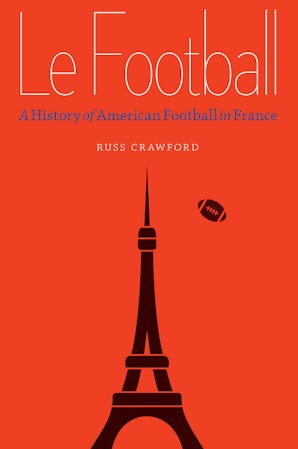
366 pages
25 illustrations, 18 tables
August 2016
978-0-8032-9030-3
$39.50 Add to CartAugust 2016
978-0-8032-9028-0
$39.50 Add to CartThere are two kinds of football in France.
American football was first played in France in 1909 during the cruise of the Great White Fleet. Then, during World War I, the American military shipped footballs, helmets, and shoulder pads alongside rifles and ammunition to the western front. A 1938 tour of two teams lead by Jim Crowley of Fordham University maintained the game until World War II, when the arrival of millions of young Americans in France motivated the U.S. military to sponsor several bowl games. During the 1950s and 1960s, when the United States occupied bases in France during the Cold War, American soldiers, sailors, and airmen played more than a thousand football games. When France withdrew from NATO, however, American bases were forced to close, leaving American football without a natural home on Gallic shores.
In the 1970s American college and semi-pro teams tried once more to generate interest in the game among French nationals through a series of tours, but until a French physical education instructor vacationed in Colorado and brought equipment back to France, there was little local enthusiasm for the sport. On the back of that vacation, and from one team in Paris, organized American football in France grew to more than 215 teams with more than 22,000 active players today.
Le Football tackles the struggles and successes of American football in France and discusses how, unlike baseball and basketball, football has never been an overt instrument of American cultural influence. Russ Crawford keeps the chains moving as he shows how the modern, homegrown sport developed largely independent of American encouragement into a small but successful culture.